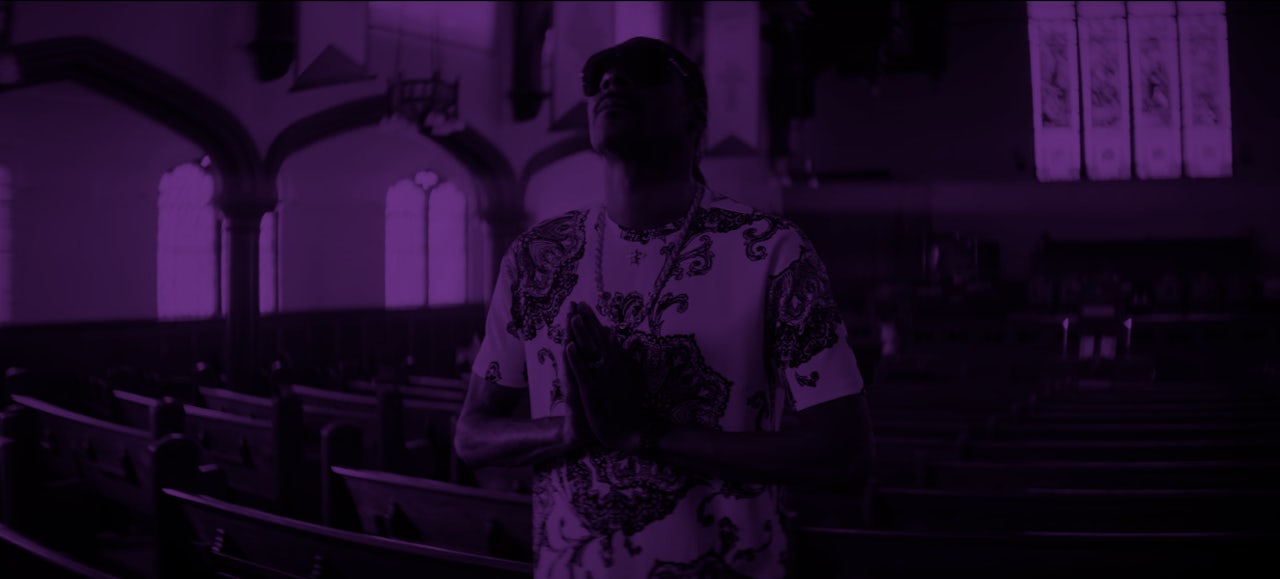In a secular music industry where appreciation of God comes secondary to a fire beat, it may surprise you to learn our national music charts have not one, but two regularly tracked religious music categories: gospel and Christian. This year, when Snoop Dogg ascended to the top of the gospel charts with a new record, when rumors abound that Justin Bieber is working on a Christian record of his own, and when musical genres at large are increasingly flattened into a greater pool of “it’s all music, man,” it’s worth thinking about why worship music is tracked as a major musical genre at all.
Billboard published its first music chart in 1936 and began the Hot 100, a chart of the highest selling singles in the country, in 1958. Online archives for Christian albums date back to November 12, 1983, with gospel albums coming two weeks later. More formally, the outlet started tracking Christian songs in 2003 and gospel songs in 2005.
From the beginning, the gospel and Christian charts were marked by a racial divide: black artists were the former, white artists were the latter. (There were a few exceptions such as African-American artist Leon Patillo, who had a handful of Christian hits in the ‘80s.) As Journal of Gospel Music Editor in Chief Bob Marovich told The Outline, that racial divide is rooted in the very different traditions of worship music in long-segregated black and white American churches.
“Stylistically, gospel music has borrowed from the predominant African-American music styles — blues, jazz — and, of course, it influenced R&B and soul music,” said Marovich. “When enslaved Africans were brought to America from West Africa, they brought with them their culture, representing many countries. There were styles of celebration music — performance worship — that gospel has kept alive longer than any other musical genre: and clapping, repetition, falsetto, even the vamps.”
“Christian music kind of has evolved out of the Southern gospel music — which was heavily influenced by country music, by shape note singing, by Scots-Irish folk music — and now has really picked up more from the predominating pop sound. Rock, soft jazz, that sort of thing.”
Lyrically, too, there are subtle differences that are nonetheless distinct. Contemporary Christian, as Marovich explained, mostly features lyrics focused on the glory of God itself, while gospel songs tend to focus on God as a source of strength in troubling times and everyday earthly struggles. But as musical genres have developed and evolved, the line between gospel music and everything else Christian hasn’t always been so clear. A minor controversy erupted in 2004 when Kanye West’s “Jesus Walks” got a bit of embrace from the gospel music world. Then, The Washington Post reported that the song was removed from consideration for a major gospel music award after the committee overseeing it received a wave of complaints of West’s inclusion. "I think we have to think more broadly about what gospel is,” African American pop culture scholar Mark Anthony Neal told the paper at the time.
More recently, in 2014 Michelle Williams of Destiny’s Child fame scored a number one gospel hit with her song “Say Yes” featuring Beyoncé and Kelly Rowland — this, despite the song’s heavy dance music influences. But the non-gospel song’s categorization didn’t raise eyebrows due to its clear roots in South African house music, a genre of EDM that builds on African rhythms and is, like Gospel, from a black tradition (though not exactly a worship one).
Even the secular music genres tracked by Billboard and Nielsen Soundscan, the company behind its data, don’t always have such obvious demarcations. This has been especially true as hip hop has risen to be one of the most popular music genres today. Kendrick Lamar, Migos, N.E.R.D, Drake, and Cardi B have all enjoyed success on the pop charts despite being commonly understood as rappers. The popular song “Freaky Friday” by Lil Dicky and Chris Brown has its place on the R&B charts, despite the fact that it is a joke rap song with a heavy pop sound.
Few categorizing systems can keep up with the cross-tradition borrowing and musical innovation that bring us new, exciting microgenres on what feels like a daily basis. And the challenge of keeping tabs on the bounds between genres is implied by how inaccessible Billboard and Nielsen Soundscans criteria for each musical category is for the casual curious person. I failed to find the criteria listed on either of their websites; multiple requests for the criteria for Nielsen Soundscans genres were ignored after an initial response asking what this article would be about.
In the end, what two companies deem to be a certain type of music is of little consequence to music consumers and creators. This is especially true for Snoop Dogg, who has built a career that thrives off of his frequent jumps to various corners of American pop culture. As the musical genres and the ways we listen to them become more and more fluid, categorizing and charting operations like Billboard will only continue to seem more and more archaic. The sometimes puzzling, very racialized differences between the gospel and Christian charts — and for some the fact that separate religious charts exist at all — will only seem increasingly perplexing, should more artists with cross genre appeal continue to dip their toes in religious waters.
